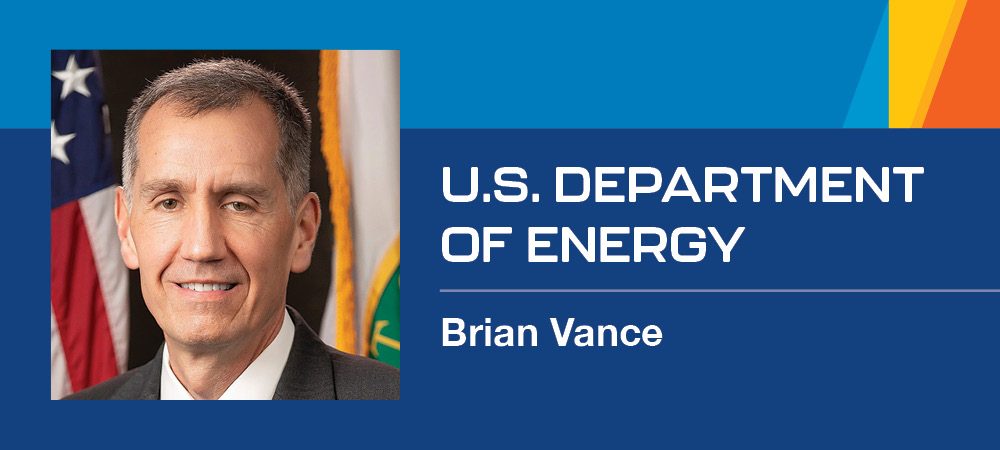
Home » Hanford plant is on cusp of melting waste after an eventful 2020
Hanford plant is on cusp of melting waste after an eventful 2020

April 16, 2021
The Hanford site team has consistently supported our nation during unprecedented times and this year has been no different.
The innovation and determination of our workers, from the most experienced leaders to those just starting their careers, have ensured success throughout our site history during both the national security mission of the past and today’s efforts to clean up and protect the environment while navigating a pandemic.
Over the past year, the Hanford team demonstrated not only innovation and dedication, but also tenacity and flexibility.
In March 2020 and almost overnight, more than 6,000 employees transitioned from our traditional way of working to teleworking. While a change of that magnitude is never perfect, the Hanford team aggressively worked through issues and implemented timely solutions professionally and constructively.
Despite the challenges of the pandemic, 2020 marked an inflection point at Hanford as we shift from a construction focus to tank waste treatment operations.
Construction is now complete on all facilities at the Waste Treatment and Immobilization Plant needed to begin tank waste treatment via the Direct-Feed Low-Activity Waste (DFLAW) program.
This program is a system of interdependent projects and infrastructure improvements that will operate together to send treated waste from Hanford’s tank farms directly to the treatment plant. Technicians vital to running more than 200 separate systems and remote operations for the DFLAW facilities are trained and on the job.
The Hanford team also made progress in reducing risks to the environment. We delivered exceptional progress on complex cleanup projects to reduce risks posed by aging structures and groundwater contamination, anchored by our collective commitment to the health and safety of our workers, our community and our environment.
These achievements have helped usher in a new era for Hanford cleanup – one that will require a high level of integration between the two Hanford field offices and our contractor teams as we approach the start of tank waste treatment.
As we continue to improve collaboration across the site, we are focused on an ambitious slate of priorities this year.
These priorities will move us along the path of addressing tank waste challenges, reducing risks from aging facilities, remediating contaminated soil and groundwater and safely managing and disposing of waste.
The Hanford team has hit the ground running this year, completing stabilization of aging underground structures in the footprint of the former Plutonium Finishing Plant.
This priority not only reduces risks to workers and the environment, but also enables our team to finish removing the last of the demolition rubble this year.
Construction also is moving forward on a new dry-storage area for safer storage of cesium and strontium capsules that will be removed from underwater storage.
We’re moving forward with steps to place former nuclear reactors along the Columbia River into interim safe storage and continue to significantly shrink areas of groundwater contamination near the river.
When it comes to tackling tank waste, we will finish demonstrating that a tank-side treatment system critical to DFLAW success is ready for operations.
We also are preparing the treatment plant for heat up of its first melter, a significant step toward immobilizing tank waste in glass, and upgrading the engineered landfill where the treated waste will be dispositioned.
Moving all of these facilities forward in the commissioning phase is a top priority for the year ahead, as these are the last steps before plant startup.
We look forwarding to partnering with the Tri-Cities community as we work to achieve these priorities. From my vantage point, beyond the impressive physical progress achieved to date, I am most proud of the growth of our Hanford leadership team and the strengthening of our relationships with our community forged through our work together during challenging times.
The Hanford leadership team remains engaged with local community and health care leaders to ensure site operational decisions are made in consideration of community conditions and in support of community actions.
Keeping our workers, their families and our community safe has been and will continue to be the No.1 priority.
We have embraced new ways of communicating virtually to maintain our commitment to public engagement, conducting online Hanford Advisory Board meetings and public comment periods, and virtual discussions with our regulators.
We also have created a Hanford site virtual tour on Hanford.gov as another vehicle for those interested in our cleanup effort to stay connected. Recognizing the changes in our community since the Hanford Advisory Board was formed many years ago, we are working on adding as many as six new seats to the board to better represent diverse perspectives.
I am extremely grateful for our One Hanford team’s dedication, toughness and tenacity in safely delivering significant progress in 2020. I am confident that we will leverage our collective experiences and enhanced teamwork as the strong foundation for what I believe will be an exceptional new era of cleanup progress at the Hanford site this decade.
I believe that we’ve seen the very best in people through acts of kindness, charity, courage and selflessness as we’ve worked together to overcome the challenges of the times.
The positive actions by so many have been inspiring, providing hope that the future that we are working together to shape will be bright and prosperous for the Hanford site, the Tri-City community, the region and our nation.
Brian Vance is the manager of the U.S. Department of Energy Office of River Protection and Richland Operations Office.
Hanford
KEYWORDS april 2021




